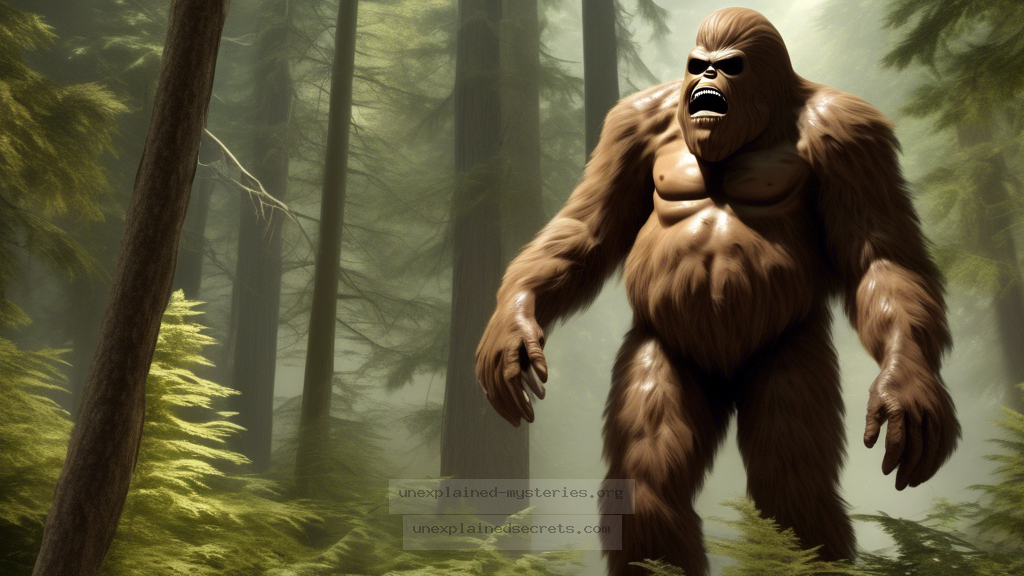What Evidence Exists for the Existence of Bigfoot in North America?
What Evidence Exists for the Existence of Bigfoot in North America?
The question of whether Bigfoot, often referred to as Sasquatch, exists has intrigued enthusiasts, researchers, and skeptics alike for decades. This cryptid has become a cultural phenomenon, spawning numerous investigations, documentaries, and even hoaxes. Despite the lack of definitive proof, numerous accounts and pieces of evidence continue to fuel the debate. Understanding the evidence surrounding Bigfoot is critical, not just for cryptozoology enthusiasts but for anyone interested in the mysteries of the natural world. In this post, we will delve into the various types of evidence that have emerged over the years, analyzing their validity and relevance to the ongoing quest for the truth behind this elusive creature.
Historical Context of Bigfoot Sightings
Bigfoot sightings date back centuries, with indigenous peoples across North America documenting encounters with large, hairy beings in their folklore. The term “Sasquatch” itself is derived from the Salish word “sásq’ets,” which describes a wild man or hairy giant. Notably, the first widely publicized sighting occurred in 1958 when a construction worker found large footprints in Bluff Creek, California, leading to the phenomenon’s modern cultural emergence.
Throughout the years, various reports have surfaced, often describing a creature standing between 7 to 10 feet tall, covered in dark hair, and exhibiting human-like features. Each sighting contributes to the tapestry of evidence that fuels interest and speculation around Bigfoot, making it essential to examine these accounts critically and contextually.
Types of Evidence: Footprints and Physical Marks
One of the most compelling pieces of evidence for Bigfoot’s existence comes from the numerous footprint casts that have been discovered over the years. Many of these prints exhibit unique characteristics, such as an elongated toe structure and an unusual depth that suggests a heavy creature. The most famous of these is the Patterson-Gimlin film from 1967, which purportedly shows a female Bigfoot walking through the woods of Northern California. The film has generated extensive debate regarding its authenticity but remains a cornerstone of Bigfoot evidence.
| Type of Evidence | Description | Notable Example |
|---|---|---|
| Footprints | Large, human-like footprints, often showing unusual toe structure. | Patterson-Gimlin film |
| Hair Samples | Hair that is often claimed to belong to Bigfoot, though many are later identified as belonging to known animals. | Hair sample from the 2000s in Oregon |
| Audio Recordings | Strange vocalizations or wood-knocking sounds attributed to Bigfoot. | The Ohio Howl |
Hair Samples and Genetic Testing
Hair samples purported to belong to Bigfoot have been collected over the years, with varying degrees of analysis conducted. In some instances, hair samples have been sent for genetic testing, only to be identified as belonging to known animals such as bears or deer. However, there have been a few intriguing cases where hair samples remain unclassified, leading some researchers to believe they could belong to an unknown species.
Notable Fact: In 2019, a study published in the journal Nature analyzed DNA from a hair sample found in the Himalayas, leading to the discovery of an unknown species of bear. This underscores the importance of ongoing genetic research in potentially identifying undiscovered species.
Audio Recordings: The Sounds of Bigfoot
Audio evidence plays a crucial role in the Bigfoot investigation. Various recordings have captured what some researchers believe to be Bigfoot vocalizations. The Ohio Howl, recorded in the 1990s, is one of the most famous audio clips. It features a series of howls and screams that many claim resemble those of a large, unknown primate.
However, skeptics argue that these sounds could easily be attributed to known wildlife or even human-made noises. The challenge lies in isolating the sounds and determining their origin. The continued use of advanced audio analysis techniques may provide more insight into these mysterious recordings.
Photographic Evidence: Between Reality and Hoaxes
Photographs claiming to show Bigfoot have circulated for decades, from blurry shots to clear images. While some enthusiasts view these images as compelling evidence, skeptics often dismiss them as hoaxes or misidentifications. The Patterson-Gimlin film remains the most famous, but other images, such as the “Minnesota Iceman” and the “Sierra Sounds,” also attract significant attention.
It’s crucial to approach photographic evidence with skepticism. Many images can be manipulated or misinterpreted, leading to a phenomenon known as pareidolia, where the brain perceives familiar shapes in random patterns. Researchers must focus on verifying the authenticity of such images before drawing conclusions.
Warning: Always verify the source and context of photographic evidence. Many images claiming to depict Bigfoot have been proven to be fakes.
Physical Evidence: Hair, Scat, and Other Findings
Beyond footprints and audio, physical evidence such as scat and nest structures attributed to Bigfoot have been reported. Researchers have documented unusual nests resembling those made by large primates, often found in remote areas. Scat samples have been collected and studied to determine dietary habits, but many remain inconclusive.
The challenge with scat samples is that they often resemble those of large mammals, making identification difficult. Nevertheless, some researchers argue that through diligent fieldwork and analysis, unique findings may emerge that could support the existence of Bigfoot.
Alternative Perspectives: Skepticism and Scientific Inquiry
While many individuals passionately believe in the existence of Bigfoot, a significant portion of the scientific community remains skeptical. Critics argue that the lack of physical evidence, coupled with the challenges of the environment—such as dense forests and rugged terrain—renders the idea of a large, undiscovered primate unlikely. They emphasize the importance of rigorous scientific inquiry, encouraging the application of the scientific method to claims of Bigfoot sightings.
Some researchers propose that the sightings could be the result of misidentified animals or psychological phenomena. For instance, large bears standing on their hind legs or the effects of pareidolia may explain some encounters. Understanding these alternative perspectives is crucial for fostering a balanced discourse on the subject.
Common Misconceptions About Bigfoot
Several misconceptions surround the Bigfoot phenomenon, often leading to confusion and misinterpretation of evidence. One prevalent myth is that Bigfoot is an exclusively North American creature. In reality, similar beings appear in folklore worldwide, such as the Yeti in the Himalayas and the Yowie in Australia.
Another common misconception is that all evidence supporting Bigfoot is fabricated or hoaxed. While there have certainly been hoaxes, many researchers are genuinely committed to investigating the phenomenon and utilizing scientific methods to explore the evidence. It’s essential to differentiate between credible research and sensationalist claims.
Best Practices for Investigating Bigfoot
For those interested in investigating the Bigfoot phenomenon, adhering to best practices is crucial. First, researchers should familiarize themselves with the area and its ecology to understand potential habitats better. Conducting fieldwork responsibly, respecting local wildlife, and avoiding disruption of natural habitats is essential.
Utilizing technology, such as motion-activated cameras and audio recording devices, can enhance research efforts. Collaborating with other researchers and sharing findings can lead to more comprehensive investigations. Lastly, maintaining an open yet critical mindset will help researchers navigate the complexities of the Bigfoot mystery.
Future Developments: Ongoing Research and Exploration
The search for Bigfoot continues to inspire new research and exploration. With advancements in technology, researchers can apply more sophisticated methods to analyze evidence, such as DNA sequencing and high-resolution imaging techniques. Collaborative efforts among scientists, cryptozoologists, and amateur enthusiasts may pave the way for groundbreaking discoveries.
As public interest in Bigfoot remains high, funding and support for research initiatives may increase. Continued exploration of remote areas, coupled with the application of modern science, could yield new insights into the existence of this enigmatic creature.
Conclusion
The question of whether Bigfoot exists remains one of the most fascinating mysteries in cryptozoology. While evidence ranges from compelling to inconclusive, the phenomenon sparks curiosity and debate across cultures and generations. By examining historical context, types of evidence, alternative perspectives, and best practices for investigation, we can better understand the complexities surrounding Bigfoot.
As we look to the future, ongoing research and developments in technology will likely shape the dialogue surrounding this elusive creature. Whether you are a skeptic or a believer, the quest for truth about Bigfoot continues to be an engaging journey into the unknown. 🌲🦶
Other Articles
Recent Posts
- What Happened to Flight MH370? The Conspiracy Theories That Still Haunt Us
- What Secrets Lurk Within the Walls of the Infamous Trans-Allegheny Lunatic Asylum?
- What Evidence Supports the Existence of Bigfoot in the Pacific Northwest?
- What Happened to the Indus Valley Civilization? Unraveling the Mysteries of Ancient Urban Life
- Can Telepathy Be Scientifically Proven Through Laboratory Evidence?







